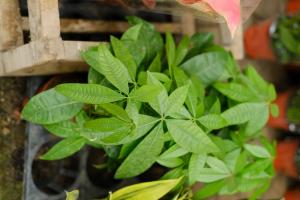When to Plant Garlic in Zone 6
Introduction
Garlic is a delicious and versatile ingredient that is used in a variety of cuisines around the world. Whether you're a fan of roasted garlic or love the fiery kick it can add to a dish, there's no denying that garlic is a must-have in any kitchen. If you live in zone 6, you may be wondering when the best time to plant garlic is. In this article, we'll take a look at the optimal planting time for garlic in zone 6, and how to get the most out of your garlic crop.
What is Zone 6?
Before we get into when to plant garlic, let's take a quick look at what zone 6 is. Zone 6 is a designation used by the United States Department of Agriculture (USDA) to describe areas with an average minimum temperature of -10 to -5 degrees Fahrenheit (-23 to -21 Celsius). This designation helps gardeners determine which plants are most likely to thrive in their area, as different zones have different climates and growing conditions.
The Best Time to Plant Garlic in Zone 6
The best time to plant garlic in zone 6 is in the fall, generally between mid-September and early November. Garlic is a cold-hardy plant that needs a period of cold weather to develop properly, so it's important to plant it before the ground freezes. If you plant garlic too early in the fall, it may start to sprout before winter and become damaged by freezing temperatures. If you plant it too late, it may not have enough time to develop properly before the winter sets in.
How to Plant Garlic
To plant garlic, choose a well-drained area with plenty of sunlight. Garlic prefers soil that is rich in organic matter, so you may want to amend your soil with compost or aged manure before planting. Break apart the garlic bulbs into individual cloves, making sure to leave the papery skin intact. Plant the cloves pointy end up, about 2-3 inches deep and 6-8 inches apart. Cover the cloves with soil and water them well. Mulch with straw or leaves to help insulate the soil and retain moisture.
Caring for Garlic
Garlic is a relatively low-maintenance crop, but it does require some attention to ensure a good harvest. Keep the soil evenly moist, but avoid over-watering, which can lead to fungal diseases. Fertilize with a high-nitrogen fertilizer in the spring, and again in early summer. If you notice any signs of pests or disease, take action immediately to prevent the problem from spreading.
Harvesting Garlic
Garlic takes about 6-8 months to mature, depending on the variety and growing conditions. The bulbs are ready to harvest when the leaves start to turn brown and dry out. Be careful not to damage the bulbs when digging them up, as this can lead to spoilage. Once harvested, allow the bulbs to dry in a warm, dry place for a few weeks before storing them in a cool, dark place.
Conclusion
Planting garlic is a fun and rewarding way to add flavor to your cooking, and with a little effort, you can have a successful garlic crop in zone 6. By planting in the fall, caring for your plants, and harvesting at the right time, you can enjoy the delicious taste of fresh garlic all year round.

 how many times do yo...
how many times do yo... how many planted tre...
how many planted tre... how many pine trees ...
how many pine trees ... how many pecan trees...
how many pecan trees... how many plants comp...
how many plants comp... how many plants can ...
how many plants can ... how many plants and ...
how many plants and ... how many pepper plan...
how many pepper plan...






























